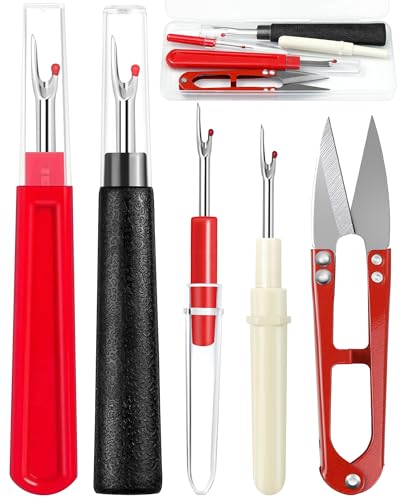Sewing a blanket stitch by hand is one of my favorite techniques. It’s simple yet versatile, perfect for adding a personal touch to your projects. Whether you’re working on a cozy blanket or embellishing a favorite piece, mastering this stitch opens up a world of creative possibilities.
I remember the first time I tried it, feeling a bit unsure but excited to learn. With just a needle and some thread, you can create beautiful, sturdy seams that last. Let’s dive in and explore the easy steps to sew a blanket stitch by hand, making your next project both enjoyable and stylish.
Understanding the Blanket Stitch
The blanket stitch is a fundamental hand-sewing technique prized for its strength and decorative appeal. It’s designed to secure fabric edges, preventing fraying while adding a stylish touch to various projects.
Key Characteristics:
- Reinforcement: Loops thread around the fabric edge, creating a sturdy seam.
- Versatility: Suitable for both functional and decorative purposes.
- Adjustability: Accommodates different stitch lengths and patterns.
Common Applications:
- Edge Finishing: Strengthens raw fabric edges in blankets, quilts, and garments.
- Appliqué: Attaches decorative fabric pieces securely onto a base fabric.
- Embroidery Borders: Enhances designs with neat, contrasting outlines.
Advantages:
- Durability: Forms robust seams that endure regular use and washing.
- Simplicity: Easy to master, making it ideal for beginners and experienced sewers alike.
- Aesthetic Appeal: Offers clean lines and decorative options that enhance the overall look of a project.
Types of Blanket Stitches:
| Stitch Type | Description |
|---|---|
| Standard | Basic looped stitch ideal for general edging. |
| Cross Blanket | Forms a cross pattern, adding a decorative flair. |
| Backstitch | Provides additional strength with overlapping stitches. |
Understanding these aspects of the blanket stitch allows you to choose the right technique for your specific sewing needs, ensuring both functionality and beauty in your handmade creations.
Materials You’ll Need
- Needle: I use sharp hand-sewing needles, size 8 or 10, for precise stitching.
- Thread: Durable embroidery floss in various colors enhances the stitch’s appearance.
- Fabric: Choose a sturdy material like cotton or linen for your project.
- Scissors: Sharp fabric scissors ensure clean cuts.
- Thimble: An optional tool that protects your fingers while sewing.
- Marking Tools: Fabric chalk or pencil helps outline your stitching area accurately.
Preparing Your Fabric
Before you start sewing, I ensure my fabric is ready for a smooth blanket stitch application. Here’s how I prepare:
- Choose the Right Fabric
- I select sturdy materials like cotton or linen, as they hold stitches well and provide durability.
- Wash and Iron
- I wash the fabric to remove any sizing or chemicals, then iron it to eliminate wrinkles for precise stitching.
- Measure and Cut
- Using sharp fabric scissors, I measure and cut the fabric to the desired size, adding extra inches for seam allowances if needed.
- Mark Stitch Lines
- I use fabric chalk or a pencil to draw guiding lines where the blanket stitches will go, ensuring even spacing and straight edges.
- Stabilize Edges
- If the fabric edges fray easily, I apply a stabilizer or a strip of fabric tape along the edges to maintain shape during stitching.
- Prepare Your Workspace
- I set up a clean, flat surface with good lighting and gather all my materials, including needles, embroidery floss, and marking tools, to keep everything within reach.
By following these steps, my fabric is perfectly prepped, making the blanket stitching process efficient and enjoyable.
How to Sew the Blanket Stitch
Mastering the blanket stitch enhances the durability and beauty of your sewing projects. Follow these steps to create precise and elegant seams.
Starting the Stitch
Begin by threading your needle with embroidery floss, securing the end with a knot. Position the needle on the fabric edge where you want the stitch to start. Insert the needle from the back, pulling the thread through until the knot rests against the fabric.
Continuing the Stitch
Maintain consistent spacing by measuring your stitch length. Insert the needle into the fabric a small distance away from the previous stitch. Loop the thread around the fabric edge, pulling it tight to form the characteristic blanket stitch loop. Repeat this motion evenly along the edge to ensure a uniform appearance.
Finishing the Stitch
Once you reach the end of the seam, make a secure knot by passing the needle through the last loop. Tuck the needle under previous stitches to hide the knot. Trim any excess thread close to the fabric to complete the blanket stitch.
Tips for Successful Stitching
- Select Quality Materials
I use sharp needles size 8 or 10 and strong embroidery floss. Choosing durable fabrics like cotton or linen ensures the stitches hold well.
- Maintain Consistent Stitch Length
I keep each stitch about 1/8 inch long. This consistency creates a neat, uniform appearance and strengthens the fabric edges.
- Control Thread Tension
I pull the thread snug but not too tight. Even tension prevents puckering and maintains the stitch’s decorative appeal.
- Mark Stitch Lines Clearly
I use fabric chalk to outline where the stitches go. Clear markings guide my stitching and keep patterns accurate.

- Start and End Securely
I knot the thread tightly at the beginning and end of each line. Secure knots prevent the stitches from unraveling over time.
- Practice on Scrap Fabric
I practice the blanket stitch on a scrap piece first. This helps me achieve the right technique before working on the actual project.
- Organize a Clean Workspace
I keep my sewing area tidy and well-lit. An organized space makes stitching easier and reduces the chance of mistakes.
- Use a Thimble for Protection
I wear a thimble to protect my fingers. This allows me to push the needle through tough fabrics without discomfort.
- Take Breaks to Avoid Fatigue
I take regular breaks to rest my hands. This keeps my stitching steady and prevents errors caused by tiredness.
- Review and Adjust as Needed
« How to Sew Pleats: A Step-by-Step Tutorial to Transform Your Wardrobe
Transform Your Projects with These Using Decorative Stitches: Ideas and Tips »
I periodically check my work for consistency and adjust my technique if necessary. Continuous improvement leads to better results.
Conclusion
Sewing a blanket stitch by hand has truly been a rewarding experience for me. It’s amazing how such a simple technique can add both strength and style to my projects. I love seeing the neat durable seams and the personal touch it brings to each piece. Whether you’re a beginner or have some sewing experience mastering this stitch is definitely worth the effort. It opens up a world of creative possibilities and lets you personalize your fabrics in unique ways. I encourage you to give it a try and enjoy the process of adding your own handcrafted details to your sewing projects.

















